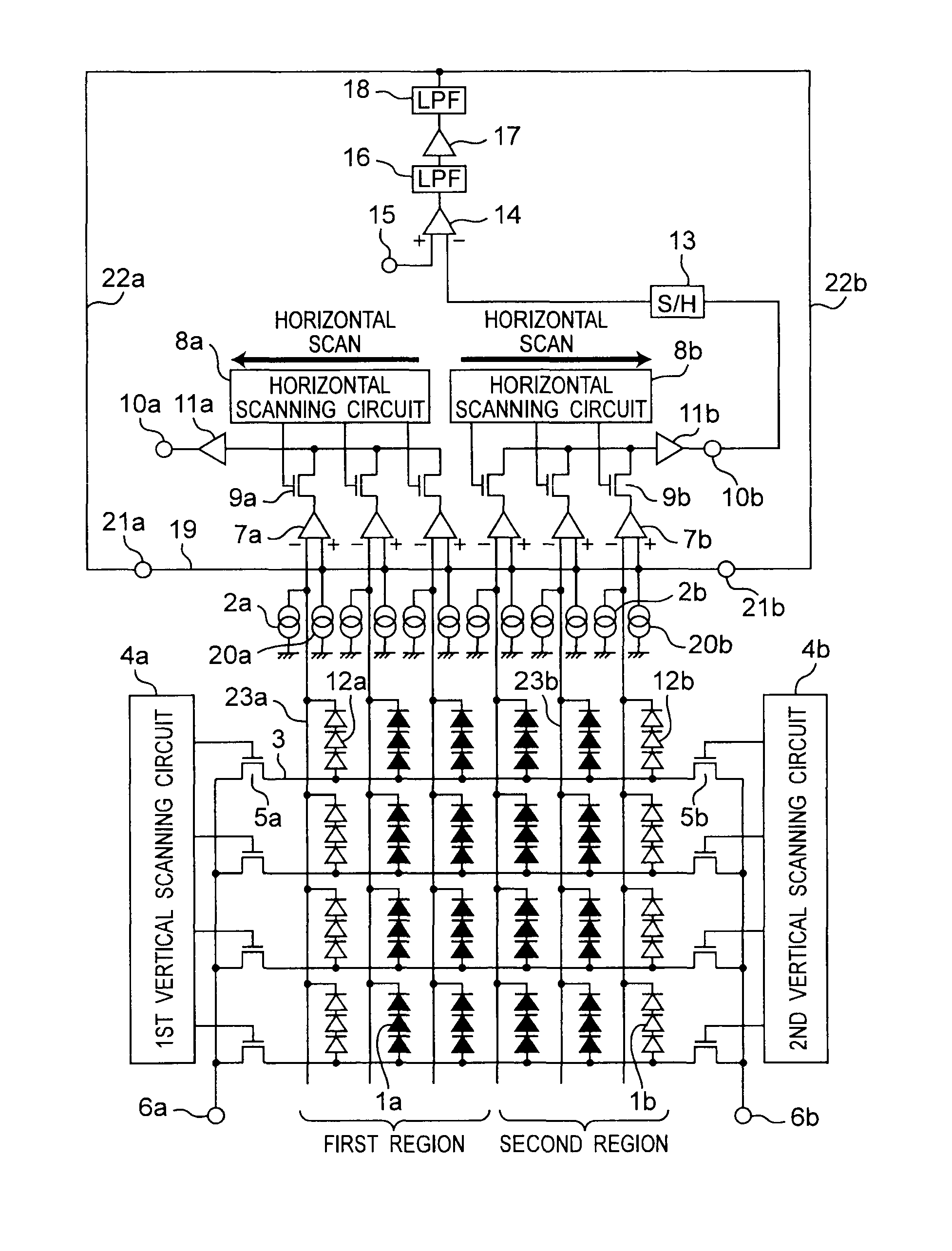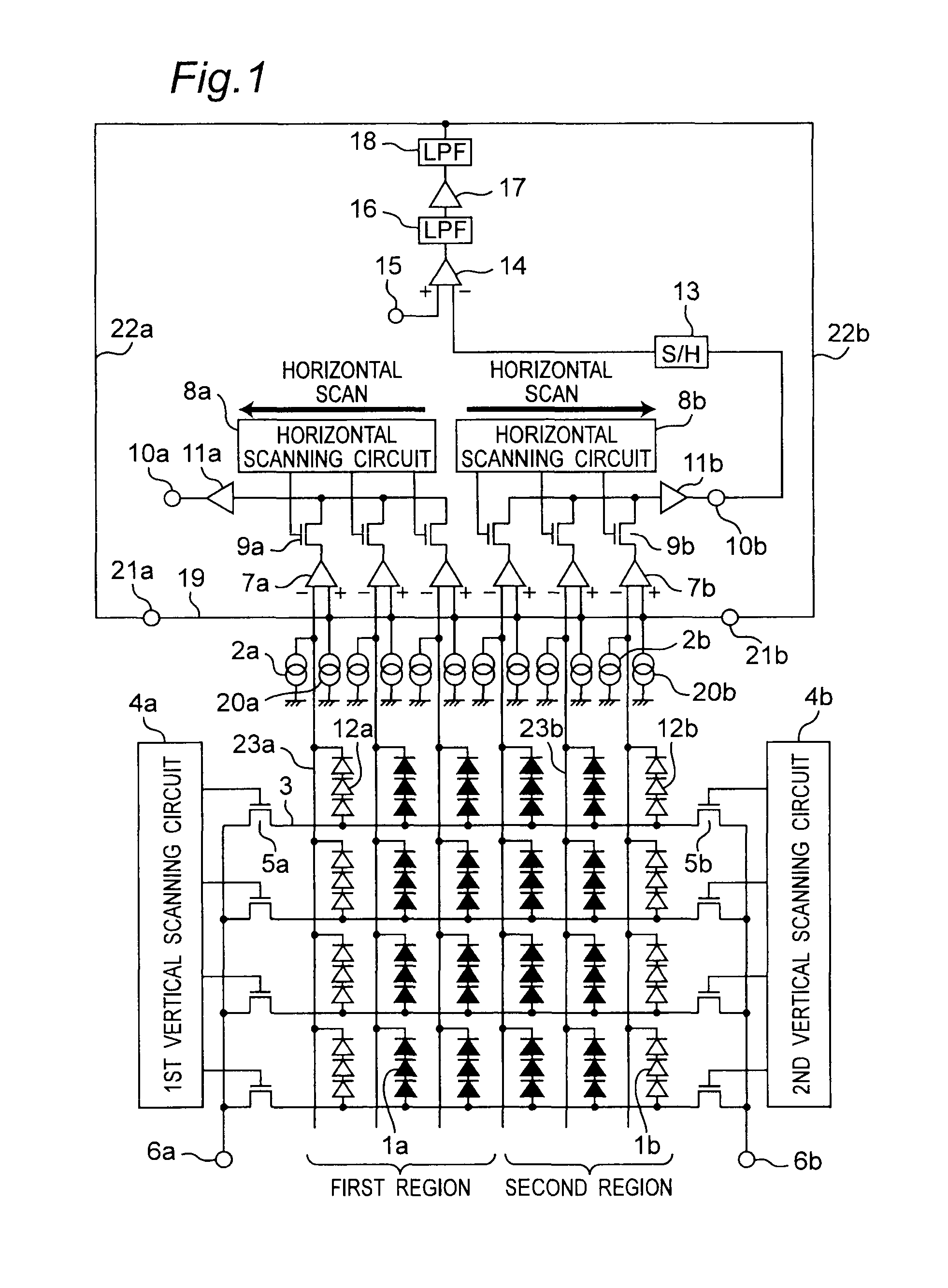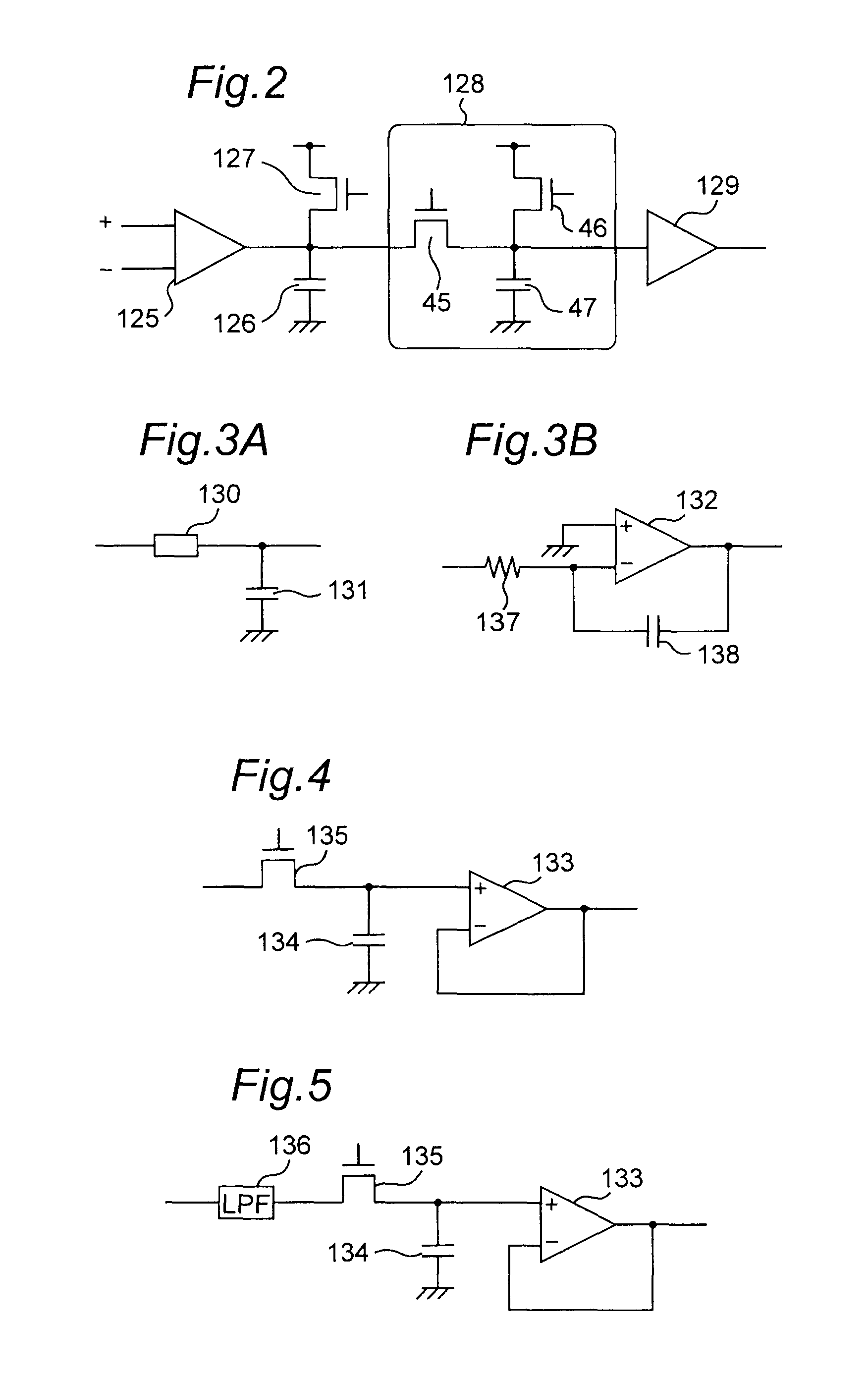Infrared solid-state imaging device
a solid-state imaging and infrared technology, applied in the field of infrared solid-state imaging devices, can solve the problems of reducing the measurement accuracy of infrared rays, device output may drift along with the temperature change of the device, and the inability to achieve the necessary degree of amplification, etc., to suppress temperature drift and reduce voltage drop in the drive line
- Summary
- Abstract
- Description
- Claims
- Application Information
AI Technical Summary
Benefits of technology
Problems solved by technology
Method used
Image
Examples
first embodiment
[0042]FIG. 1 is a circuit diagram sowing a thermal infrared solid-state imaging device in a first embodiment of the present invention. In the thermal infrared solid-state imaging device, similarly to the conventional thermal infrared solid-state imaging device, a plurality of diodes each having an infrared ray absorbing structure and a thermally insulating structure are connected in series to form individual photosensitive pixels 1a and 1b. The photosensitive pixels 1a and 1b are disposed two-dimensionally to form a pixel area.
[0043]The pixel area is divided into right and left parts from the middle. The left part of the pixel area is a first region, and the right part of the pixel area is a second region. The number of pixels contained in the first region is preferred to be same as the number of pixels contained in the second region. The photosensitive pixel 1a is a photosensitive pixel formed in the first region of the pixel area, and the photosensitive pixel 1b is a photosensitiv...
second embodiment
[0083]FIG. 7 is a circuit diagram of a thermal infrared solid-state imaging device in a second embodiment of the present invention. As shown in FIG. 7, the thermal infrared solid-state imaging device of the second embodiment is similar to that of the first embodiment in configuration, but it is different in the following structural points. The configuration and operation different from the thermal infrared solid-state imaging device of the first embodiment are specifically described below.
[0084]As shown in FIG. 7, the thermal infrared solid-state imaging device of the present embodiment is further provided with an analog averaging circuit 24 in addition to the configuration of the thermal infrared solid-state imaging device of the first embodiment. Moreover, in this embodiment, sample hold circuits 13a and 13b are provided to the signals from the first region and the second region of the pixel area, respectively. The input of the sample hold circuit 13a for the first region is conne...
third embodiment
[0094]FIG. 8 is a circuit diagram of a thermal infrared solid-state imaging device in a third embodiment of the present invention. In the thermal infrared solid-state imaging device, same as in the first embodiment, a plurality of diodes having an infrared ray absorbing structure and a thermally insulating structure are connected in series to compose the respective photosensitive pixels 1a, 1b, 1c, and 1d. The photosensitive pixels 1a, 1b, 1c, and 1d are combined to compose a two-dimensionally arrayed pixel area.
[0095]The pixel area is divided into four regions, upper and lower, right and left, from the center, that is, first to four regions. Preferably, the number of pixels included in each region should be identical. The photosensitive pixel 1a is a photosensitive pixel formed in the first region which is the upper left region of the pixel area. The photosensitive pixel 1b is a photosensitive pixel formed in the second region which is the upper right region of the pixel area. The ...
PUM
 Login to View More
Login to View More Abstract
Description
Claims
Application Information
 Login to View More
Login to View More - R&D
- Intellectual Property
- Life Sciences
- Materials
- Tech Scout
- Unparalleled Data Quality
- Higher Quality Content
- 60% Fewer Hallucinations
Browse by: Latest US Patents, China's latest patents, Technical Efficacy Thesaurus, Application Domain, Technology Topic, Popular Technical Reports.
© 2025 PatSnap. All rights reserved.Legal|Privacy policy|Modern Slavery Act Transparency Statement|Sitemap|About US| Contact US: help@patsnap.com



